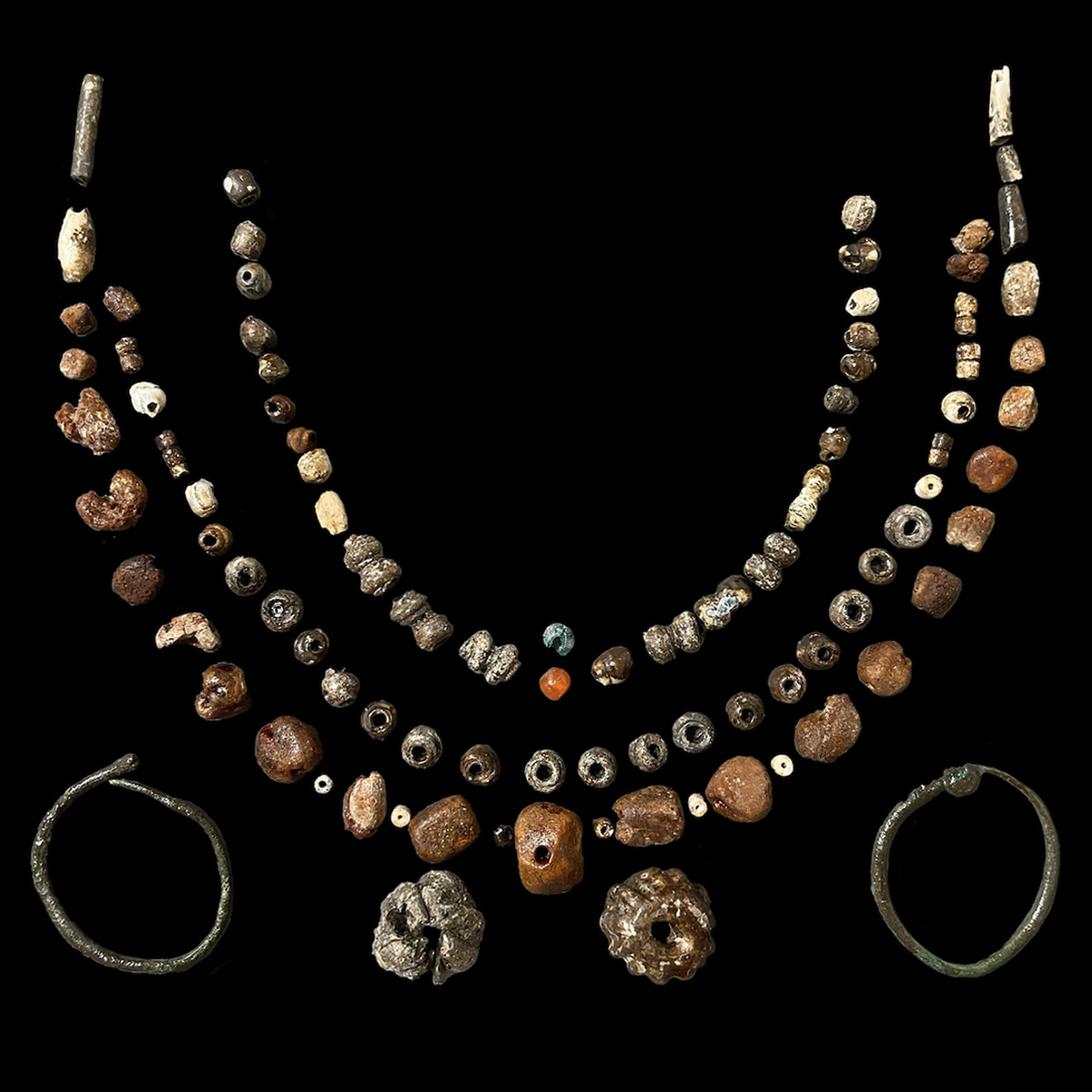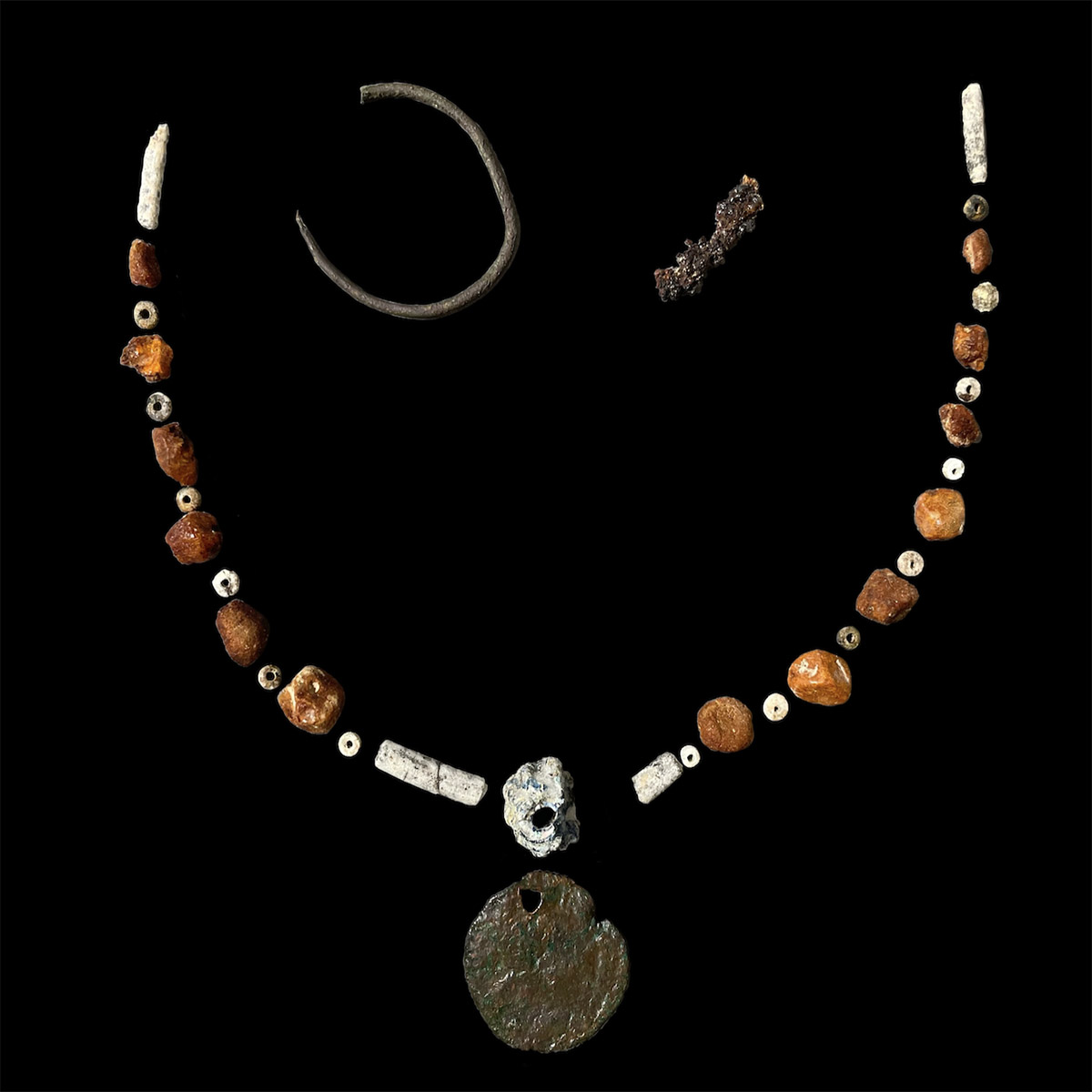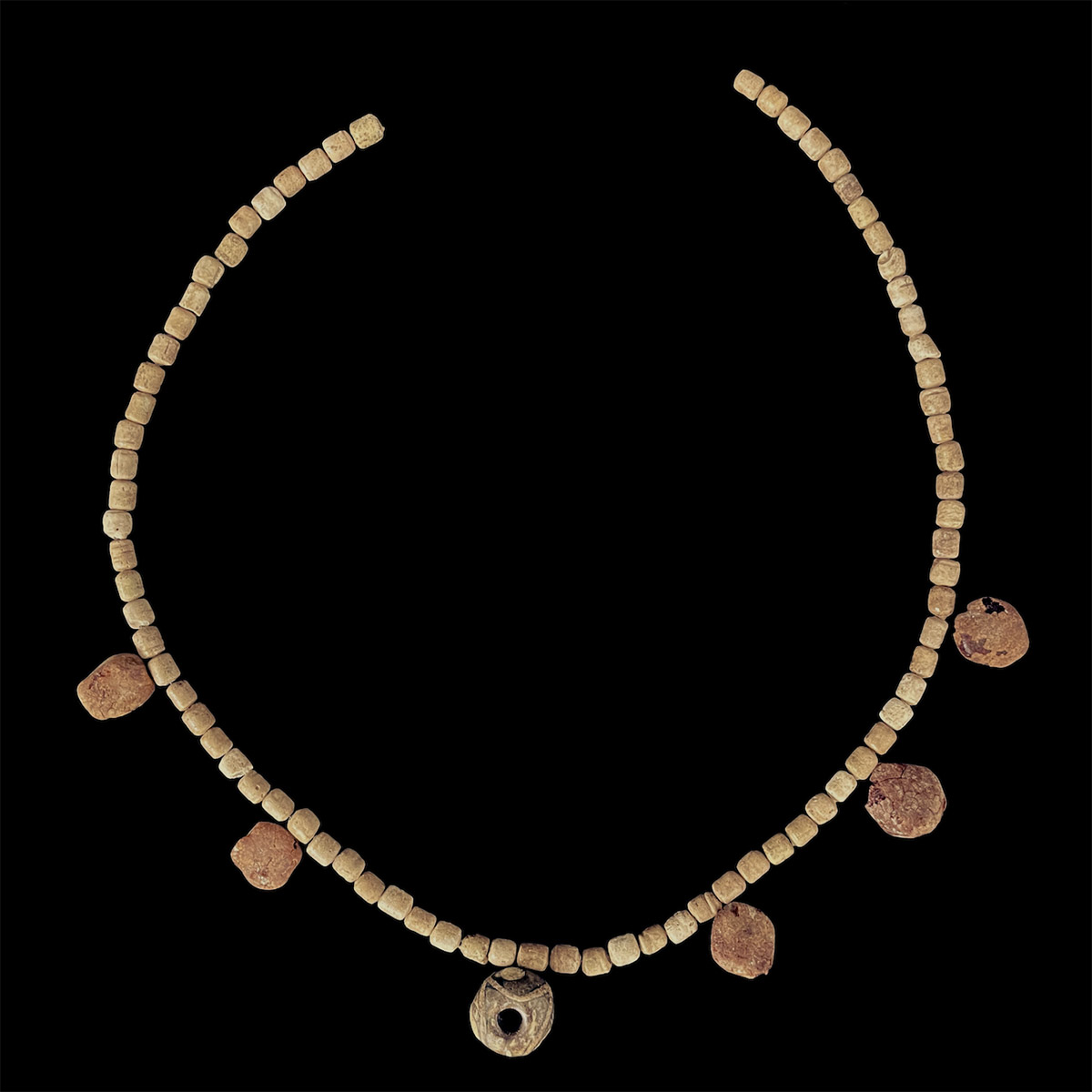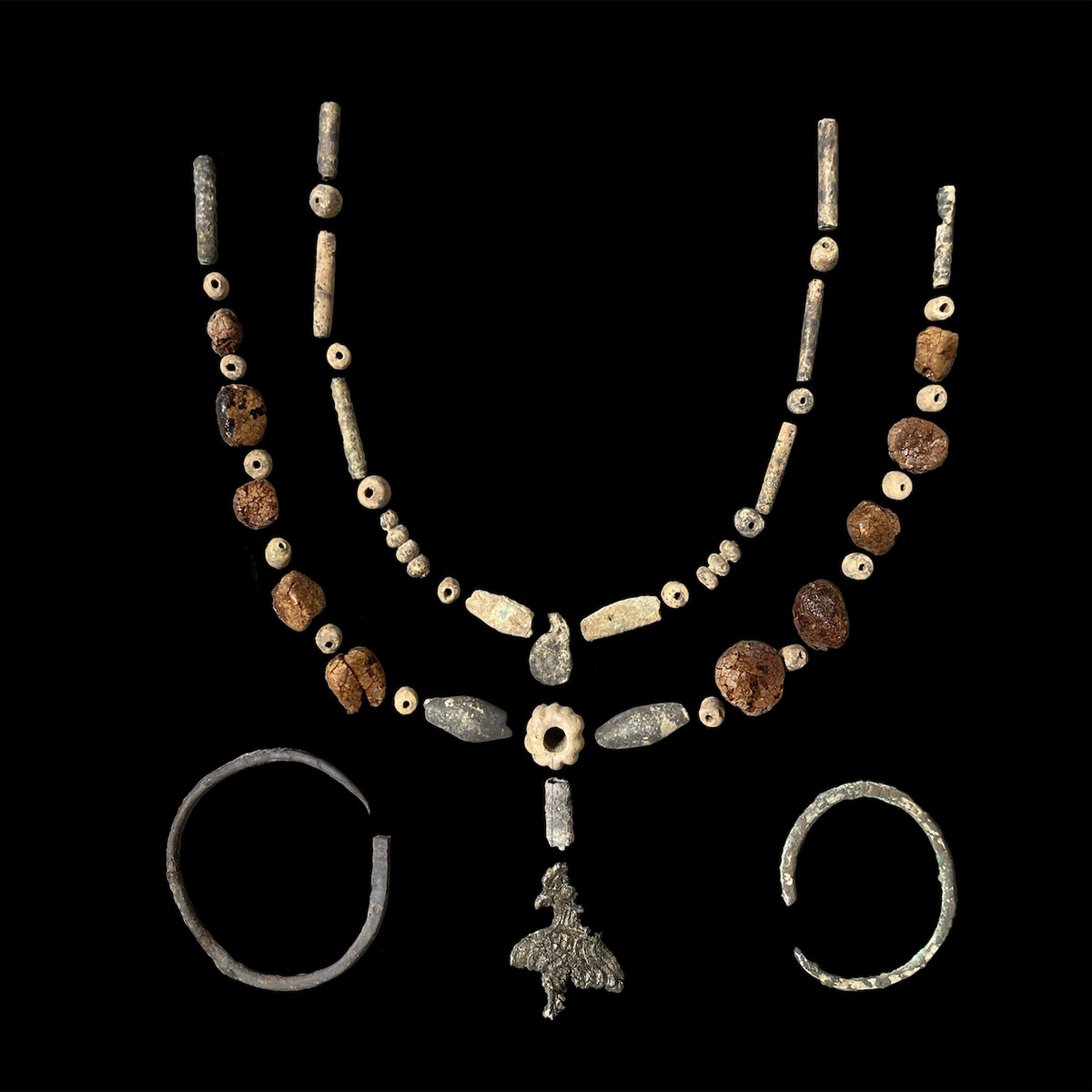Funeral rite
at the Cabezo del Molino
This new exhibition presents the extraordinary collection of necklaces and earrings that formed part of the personal adornment objects with which some girls were buried in the 6th century AD.
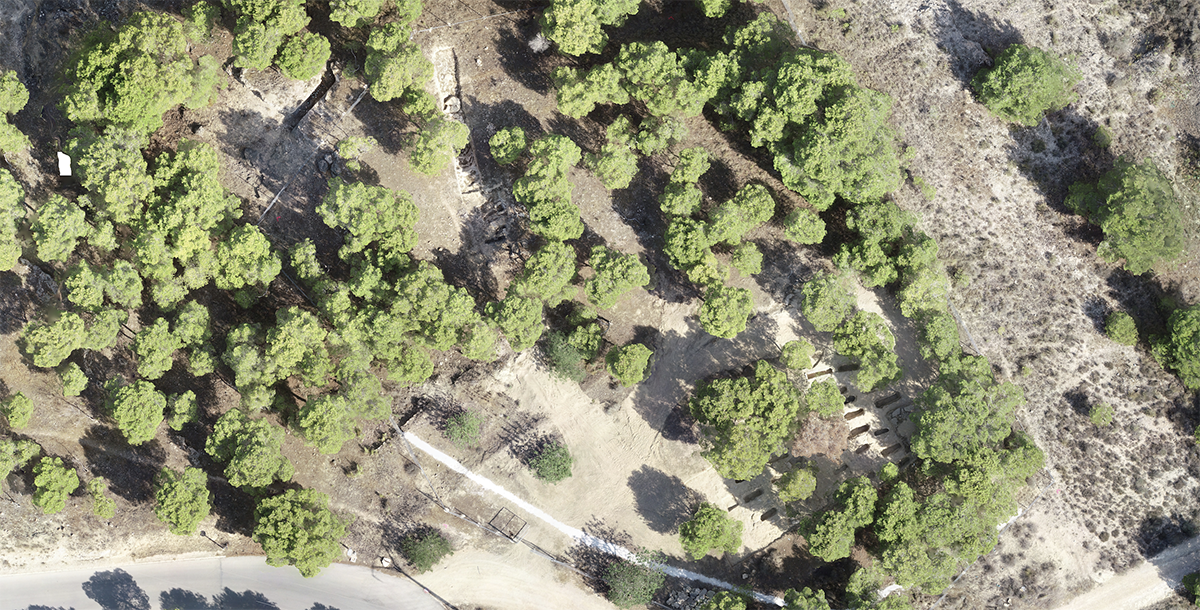
LIFE AND DEATH ON THE BANKS OF THE RIVER SEGURA
On the left bank of the Segura River, to the northeast of the present-day town of Rojales in Alicante, on the Cabezo del Molino hill, there is an archaeological site with a long human occupation that began in the 3rd century B.C. and lasted for more than a thousand years. Although the Iberian and Roman cultures also passed through here, the installation of a necropolis from the Byzantine period -VI and VII A.D.- which is currently being investigated and which has not yet revealed all its secrets, is undoubtedly noteworthy. Excavated since 2018 as part of the Excavations Plan of the Archaeological Museum of Alicante, this funerary complex is presented as one of the first examples of Christian rural communities in our lands.
THE ARRIVAL OF PEOPLE FROM THE EASTERN MEDITERRANEAN
Around 550 AD, people from the eastern part of the Mediterranean, known as the Byzantine Empire, arrived on the Iberian Peninsula. These new people, most probably soldiers and traders, extended their dominions between the southeast and southwest of the Peninsula and came into conflict with the political power of the time, the Visigothic Kingdom of Toledo. Although we have a great deal of information about the Byzantine Empire and its expansion in the times of the emperors Theodora and Justinian, we know very little about the people who arrived here and how they organised themselves in the new territory they occupied. For this reason, sites such as the Cabezo del Molino are unique and of great historical importance, having located a burial site with a large number of burials from this period.
A TROUSSEAU FOR ETERNITY
The presence of personal objects in the burials of Christian communities is scarce and inappropriate according to the new Faith, which is why the documentation of necklaces and earrings such as those presented in the exhibition is exceptional and tells a very particular story. To this day, in the Cabezo del Molino, only the child burials, most probably female, show items related to personal adornment, elements that give them an exceptional attire to wear on their journey to the afterlife. Reaching the status of married woman was undoubtedly very important for the women of this society in transition to the Middle Ages, something that a sudden death due to the "plague of Justinian" could have prevented many of them from doing.
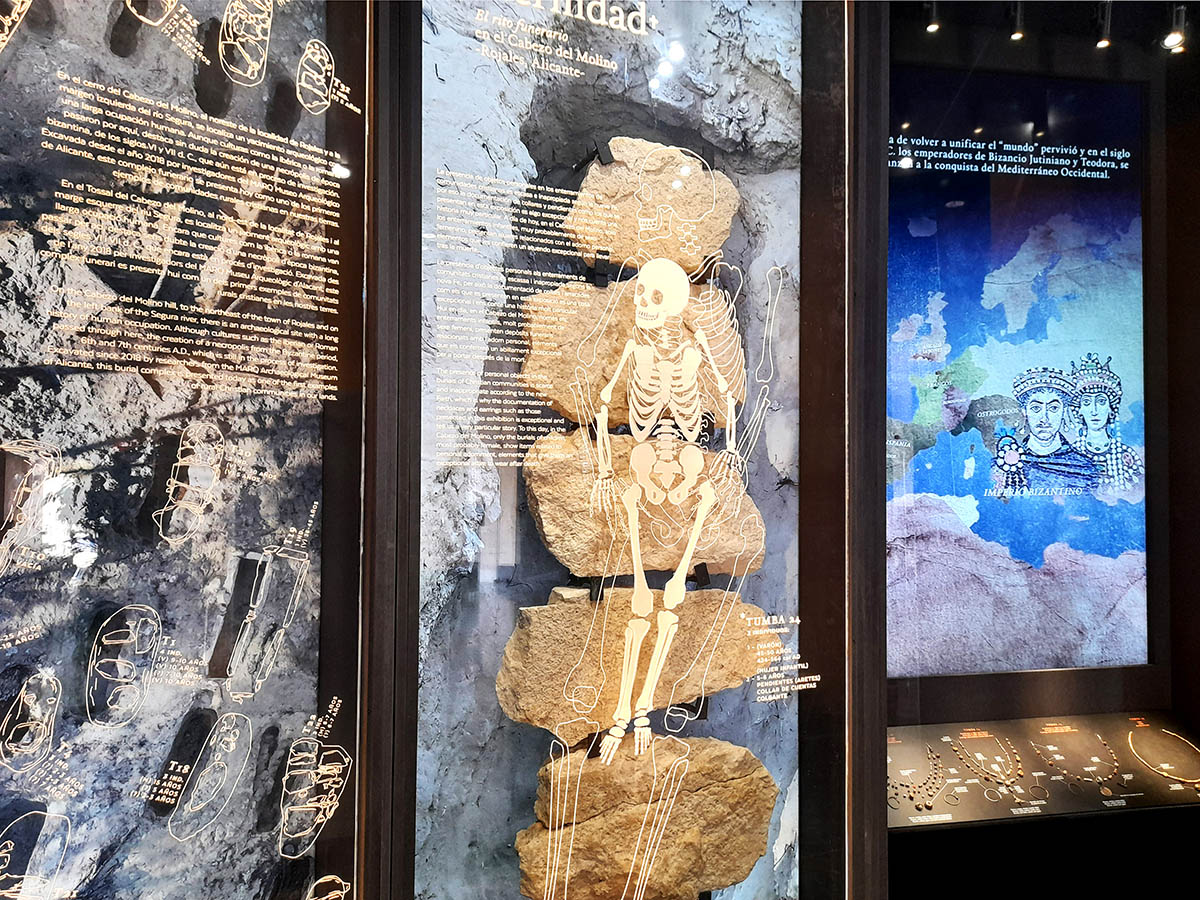
Bronze hoop earrings, necklace in amber, vitreous paste and semi-precious stones.
Bronze hoop earrings, amber and vitreous paste necklace with medallion detail.
Bronze and silver hoop earrings and necklace of glass paste and amber beads with zoomorphic pendant.
Necklace of vitreous paste and amber beads with eye-bead (protective eye).

HALL
This new exhibition presents the extraordinary set of necklaces and earrings that formed part of the objects of personal adornment with which some girls were buried in the 6th century AD. This exceptional set, presented to the public for the first time, comes from the excavations that the MARQ Archaeological Museum of Alicante is carrying out at the Byzantine site of Cabezo del Molino (Rojales, Alicante) ....
SCHEDULE
FROM TUESDAY TO SATURDAY: From 10:00 to 19:00h
SUNDAYS AND PUBLIC HOLIDAYS: From 10:00 to 14:00h
MONDAY CLOSED
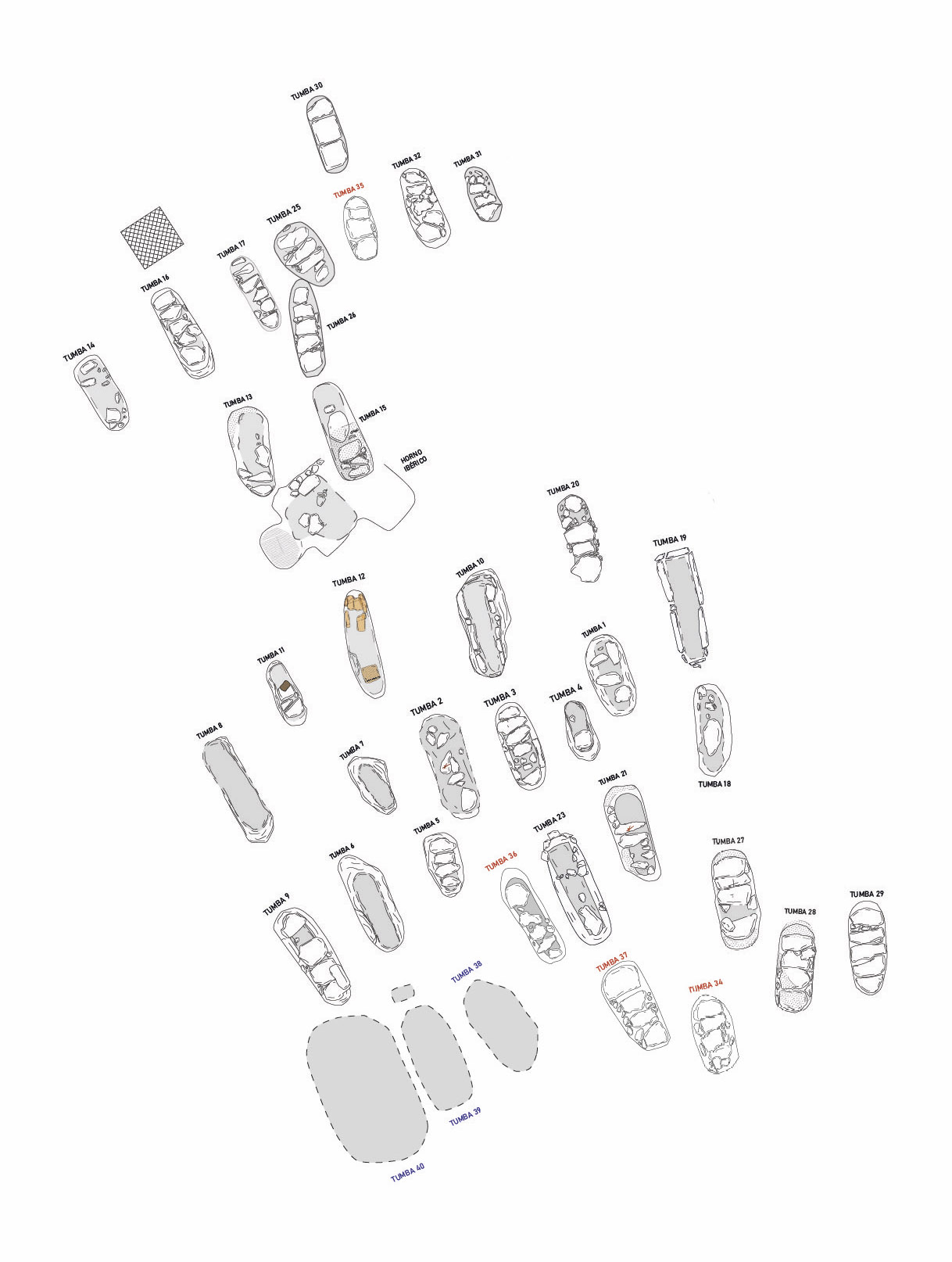
YOU MAY BE INTERESTED IN
> TIMETABLES
> RATES

